
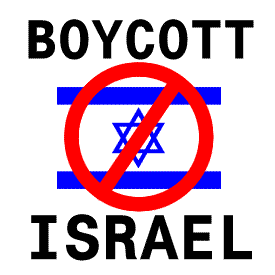
Israel's plan to annex the whole of Jerusalem, part of its efforts at bolstering its international legitimacy, is being carried out without regard for legal, moral or historical considerations, writes Dan Lieberman* in occupied Jerusalem
Three huge granite stones rest comfortably on the top of Midbar Sinai Street in Givat Havatzim, Jerusalem's northernmost district. Cut to specification, the imposing stones represent one of several preparations by the Temple Mount and Land of Israel Faithful Movement to erect a Third Temple on the Haram Al-Sharif Temple Mount. Since the Islamic Waqf owns and controls all the property on the Haram Al-Sharif, by what means can these stones be transferred to the Temple Mount and how can a temple be constructed there? Not by any legal means.
The stones are a provocation, which the Israel government refuses to halt. Neglect and passivity have led to a belief that an eventual Muslim reaction to the increasing provocations will give Israel an excuse to seize total control of the Holy Basin -- the properties that Israel intends to incorporate into a greater Jerusalem.
For decades, the Israeli authorities have spoken of a united Jerusalem -- suggesting a spiritual quality to their message -- as if Israel wanted the home of the three monotheistic faiths to be solid and stable. By being guided from one central authority, a united Jerusalem would also offer the preservation of a common and ancient heritage.
However, by stressing the word "united", Israel disguises the lack of a supporting and verifiable historical narrative that could bolster its thrust to incorporate all of an artificially created Greater Jerusalem within its boundaries. Coupled with inconsistencies and contradictions, Israel's eagerness to create a Greater Jerusalem under its total control becomes suspect. The intensive concentration on a "united" Jerusalem reveals a hidden agenda that debases Jerusalem's religious ingathering and heightens division, hatred and strife.
Examine the Holy Basin. The Holy Basin contains well- marked Christian and Muslim institutions and holy places that have had historical placement for millennia. Although people of the Jewish faith had a major presence in Jerusalem during the centuries of Biblical Jerusalem, which included rule by King Hezekiah and control by the Hasmonean dynasties, their control and presence were interrupted for two millennia.
Extensive commentary has enabled these 2000 years of lack of control and presence to seem as if they never happened and that today is only a short time from the years of Hezekiah. Some remains of Jewish dwellings and ritual baths can be found, but few if any major Jewish monuments, buildings or institutions from the Biblical era exist in the "Old City" of today's Jerusalem. The often-cited Western Wall is the supporting wall for Herod's platform and is not directly related to the Second Temple. No remains of the Jewish Temple have been located in Jerusalem -- not even a rock.
According to the religious writer Karen Armstrong, Jerusalem Jews did not pray at the Western Wall until the Mamluks allowed them to move their congregations from a dangerous Mount of Olives and pray daily at the Wall in the 15th century. At that time she estimates that there may have been no more than 70 Jewish families in Jerusalem. After the Ottomans replaced the Mamluks, Suleiman the Magnificent issued a formal edict in the 16th century that permitted Jews to have a place of prayer at the Western Wall.
The only remaining major symbol of Jewish presence in Jerusalem's Holy City is the Jewish quarter, which Israel cleared of Arabs and rebuilt after 1967. During its clearing operations, Israel demolished the Maghribi Quarter adjacent to the Western Wall, destroyed the Al-Buraq Mosque and the Tomb of the Sheikh Al-Afdhaliyah, and displaced about 175 Arab families.


Although the Jewish population in previous centuries comprised a large segment of the Old City (estimates have 7,000 Jews during the mid-19th century), the Jews gradually left the Old City and migrated to new neighbourhoods in West Jerusalem, leaving only about 2,000 Jews in the Old City. Jordanian control after the 1948 War reduced the number to zero. By 2009, the population of the Jewish quarter in the Old City had grown to 3,000, or nine per cent of the Old City's population. The Christian, Armenian and Muslim populations are the principal constituents and their quarters contain almost the whole of the Old City's commerce.
In an attempt to attach ancient Israel to present day Jerusalem, the Israeli authorities continue to attach spurious labels to Holy Basin landmarks, while claiming the falsification is due to the Byzantines. King David's Tower's earliest remains, for example, were constructed several hundred years after the Bible dates David's reign. It is a now an obvious Islamic minaret. King David's Citadel's earliest remains are from the Hasmonean period (200 BCE). The citadel was entirely rebuilt by the Ottomans between 1537 and 1541.
King David's tomb, located in the Dormition Abbey, is a cloth-covered cenotaph (no remains) that honours King David. It is only an unverified guess that the casket is related to David. The Pools of Solomon, located in a village near Bethlehem, are considered to be part of a Roman construction during the reign of Herod the Great. The pools supplied water to an aqueduct that carried water to Bethlehem and Jerusalem. The Stables of Solomon, under the Temple Mount, are assumed to be vaults that King Herod built in order to extend the Temple Mount platform. Absalom's Tomb is obviously a Greek sculptured edifice and therefore cannot be the tomb of David's son.
The City of David contains artefacts that date from before and during David's time. However, some archaeologists maintain that there is an insufficient number to conclude any Israelite presence, including that of King David, before the late ninth century. In any case any Israelite presence must have been in a small and unfortified settlement.
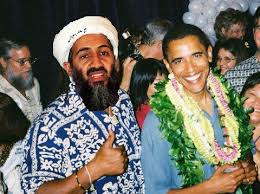
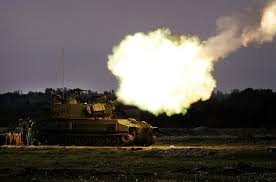
The Jerusalem Archaeological Park within the Old City, together with the Davidson Exhibition and Virtual Reconstruction Centre, tell the same story. Promising to reveal Hebrew civilisation, the museums in fact shed little light on their subject. The Davidson Centre highlights a coin exhibition, Jerusalem bowls and stone vessels. The Archaeological Park in the Old City contains among many artefacts, including Herodian structures, ritual baths, a floor of an Umayyad palace, a Roman road, Ottoman gates and the façade of what is termed Robinson's Arch, an assumed Herodian entryway to the Temple Mount. However, the exhibitions do not reveal many, if any, ancient Hebrew structures or institutions of special significance.
Reliable archaeologists, after examining excavations that contain pottery shards and buildings, have also concluded that the archaeological finds do not substantiate the biblical history of Jerusalem and its importance during the eras of a united Jewish kingdom under David and Solomon.
Margaret Steiner, for example, in an article entitled "It's Not There: Archaeology Proves a Negative" in the journal Biblical Archaeology Review for July/August 1998, states that "from the tenth century BCE there is no archaeological evidence that many people actually lived in Jerusalem, only that it was some kind of public administrative centre... We are left with nothing that indicates a city was here during their supposed reigns [of David and Solomon] ...It seems unlikely, however, that this Jerusalem was the capital of a large state, the United Monarchy, as described in Biblical texts."
West Jerusalem is another matter. With banditry prolific and the Old City gates closed before nightfall, living outside the city gates did not appeal to the population. However, the wealthy philanthropist Moses Montefiore wanted to attract the Jewish population to new surroundings, and he constructed the first Jewish community outside the Old City -- Yemin Moshe's first houses were completed in 1860. From that time onwards the Jewish presence played a role in creating a West Jerusalem.
Other institutions -- Greek Orthodox, Catholic, Russian Orthodox and Muslim -- soon ventured forth and began to own property in the evolving West Jerusalem.

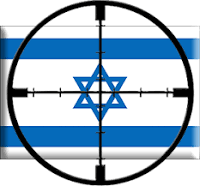
In 1948, after the Israeli army seized control of West Jerusalem, the new Israeli government confiscated all West Jerusalem property owned by Muslim institutions. The reason given was that this was "enemy property". Few Muslims and no mosques remain in today's West Jerusalem.
However, there was a contradiction. By attacking and ethnically cleansing the Christian Arab communities of Deir Yassin and Ein Kerem, Israeli forces characterised Christian Palestinians as their enemy. Nevertheless, Israel did not confiscate Christian properties, many of which are apparent in West Jerusalem. The Greek Orthodox Church owns extensive property in West Jerusalem, much of which is marked by its "T…" symbol, interpreted as the word "sepulchre".
Another contradiction is that Israel has cared for the Jewish cemetery on the Mount of Olives and expanded it as a heritage site. Part of the famous Muslim Mamilla Cemetery in West Jerusalem has been classified as refugee property and is being prepared for demolition to build the new Museum of Tolerance.
East Jerusalem reveals more contradictions. The repeated warning by Israeli leaders that co-existence is not feasible and that it is necessary to separate the Jewish and Palestinian communities is contradicted by Israel's desire to incorporate East Jerusalem into Israel. Incorporation would mean accepting somewhere between 160,000 and 225,000 Palestinians into a Jewish state.
Or would it? Whereas the older historical Jewish neighbourhoods in West Jerusalem have had their characters meticulously maintained, or have been rebuilt in their original style, the older Arab neighbourhoods in East Jerusalem have been entirely neglected (all of Arab East Jerusalem is neglected) or destroyed. How much deterioration and destruction can Palestinians absorb before they decide to leave?
Construction of Jewish homes in East Jerusalem Arab neighbourhoods proceeds, and the destruction of Arab homes, either declared to have been illegally constructed or illegally purchased, continues. On 44 dunums of land confiscated from Palestinian families, a private company has constructed the gated community of Nof Zion, and conveniently separated Palestinian Jabal Al-Mukabir from other parts of East Jerusalem. No Arabs need apply. The million-dollar condominiums are advertised for American investors.
The Israeli Ministry of Interior has approved a plan to demolish a kindergarten and wholesale market in East Jerusalem's Wadi Joz neighbourhood in order to construct a new hotel close to the Old City and near the Rockefeller Museum. The result will be the destruction of an Arab neighbourhood and its replacement by Jewish interests, which will one day join other Jewish interests.
These are only two examples of a master plan to replace the centuries-old Arab presence in East Jerusalem with a modern Jewish presence. The ancient Arab presence is further subdivided by the Annexation Wall, which runs through the East Jerusalem landscape and detaches East Jerusalem from the West Bank, making it unlikely that a Palestinian state could have its capital in East Jerusalem.
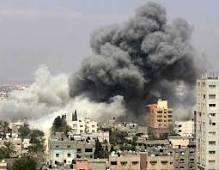
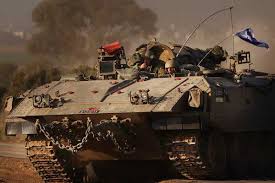
The master plan extends the boundaries of Jerusalem to include the large Israeli settlement (city) of Maale Adumim. Between Maale Adumim and East Jerusalem, Israel proposes to construct the E1 Corridor, which would join the settlements in a ring and add to the separation of East Jerusalem from the West Bank. The E1 Corridor will divide the northern and southern West Bank and will impede direct transit between Palestinian Bethlehem, which is south of E1, and Palestinian Ramallah, which is north of E1. Construction of the E1 corridor, portions of which are owned by Palestinians, could thus prevent the formation of a viable Palestinian state.
If Israel is destroying Jerusalem's heritage and subjugating its spiritual meaning, why does Israel want to unify Jerusalem?
Israel is a physically small and relatively new country with an eager population and big ambitions. It needs more prestige and wants to be viewed as a power broker on the world stage. To gain these things Israel needs a capital city that commands respect, contains ancient traditions and is recognised as one of the world's leading cities. Almost all of the world's principal nations, from Egypt to Germany to Great Britain, have capitals that are great cities. To succeed in its objectives, Israel wants an oversized Jerusalem that contains the Holy City.
However, that is not all. Jerusalem has a significant tourism market that could be expanded. It could provide new commercial opportunities as an entry to all of the Middle East. An indivisible Jerusalem under Israeli control would be worth a lot of shekels.
Israel competes with the United States as the focus of the Jewish people. It needs a unified Jerusalem to gain recognition as the home of Judaism. By controlling all the holy sites, Israel would command attention from Muslim and Christian leaders. These leaders would be forced to talk with Israel, and Israel would have a bargaining advantage in disputes.


Whatever Israel gains the Palestinians are denied. Even if Israel agrees to the establishment of a Palestinian state, it will direct its policies to limit the effectiveness of that state. Since East Jerusalem and its holy sites greatly benefit the Palestinian economy and increase Palestine legitimacy, Israel will do everything it can to prevent East Jerusalem being ceded to the new state of Palestine. An "indivisible" Jerusalem is part of that effort.
West Jerusalem only gives Israel a north/south capital. An undivided Jerusalem would give Israel a forward look towards an east/west capital, or a centralised capital for the land of previous biblical Jewish tribes.
Zionist socialist ideals and the cooperative Kibbutzim movement received support from idealistic people across the world for many years. Israel's attachment to the tragedy of the Holocaust extended that sympathy and support. With the end of the Zionist dream, the decline of kibbutz life, and the vulgarising of the Holocaust, Israel needs a new symbol of identity that will capture world attention.
If Israel has legitimate claims to Jerusalem, then those claims should be heard and discussed in a proper forum. However, that is not the process that is underway. Instead, the Israeli government is using illegal and illegitimate procedures, as well as deceitful and hypocritical methods, to force its agenda. Israel is not so much presenting its case as exerting its powers to trample all legal, moral and historical considerations.
In the Museum of the Citadel of David there is an inscription: the land of Israel is in the centre of the world, and Jerusalem is the centre of the land of Israel.
This self praise was echoed at a West Jerusalem coffee house recently during a conversation I had with several Israelis. A youthful Israeli sitting at the table abruptly entered the conversation with the words "the world looks to Jerusalem. Jerusalem is the centre of the world, and Jerusalem is the capital of Israel. Everyone needs Jerusalem, and they will need to talk with Israel."
That is why Israel desperately wants its Greater Jerusalem.
No comments:
Post a Comment